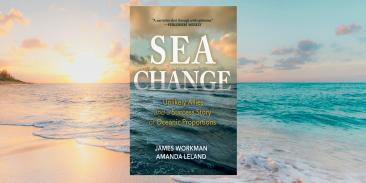Current methods for measuring the impacts of greenhouse gas emissions warp our understanding of both warming and mitigation potential
New EDF research shows the share of mid-century warming from methane-dominated sectors is twice as high as current estimates using standard CO2 equivalency metrics
(Washington DC—May 23, 2023) Methane’s influence on global warming—and the potential to mitigate it by cutting emissions—are vastly underestimated using current accounting methods, new research from Environmental Defense Fund finds.
The study, published in the journal Frontiers in Climate this month, demonstrates how reliance on the 100-year-timescale in common CO2 equivalency (CO2e) metrics dilutes the influence of methane, a short-lived climate forcer that is far more potent than CO2 but mostly influences the climate for a decade or two after its release.
“This 100-year calculation spreads the impact of methane across an entire century, obscuring both the problems it causes in the coming decades and masking the immediate benefits of existing solutions,” said Ilissa Ocko, Senior Climate Scientist at EDF and one of the study’s co-authors. “This could cause us to misalign our emissions targets with desired temperature outcomes.”
Mainstream metrics miss the mark
Ocko and her colleagues examined the warming impacts of greenhouse gas emissions—carbon dioxide, (CO2), methane (CH4) and nitrous oxide (N20)—from nine economic sectors, six that are dominated by CO2 emissions, three that are dominated by methane. Using a simple climate model as a benchmark for more accurate representation, they compared it to results from those using standard metrics to examine two future scenarios, one with no further climate action and one with strong mitigation consistent with a 1.5 °C target.
The researchers found that: methane-dominated sectors (fossil fuel production and distribution, agriculture and waste) account for more than half of warming—or avoided warming—in the coming decades from greenhouse gas emissions and their realistic mitigation. Their research also demonstrates that the standard CO2e/Global Warming Potential 100 approach (GWP1000) undervalues the role of methane-dominated sectors in warming by half.
Actionable solutions exist
While there is no one-size-fits all solution to replacing CO2e/GWP100 as the standard metric, scientists and policymakers can make use of additional tools to create a more accurate picture of warming and mitigation scenarios.
By reporting on greenhouse gas emissions individually in units of mass, practitioners can use the most appropriate metrics or models for their specific purposes. They can also use multiple metrics and/or time horizons—such the 20-year timescale in GWP20—that the authors also show can more accurately represent sectoral contributions for several decades. “We need to be explicit about the metrics and time horizons underlying GHG statistics, rather than just reporting on a number, especially for shares of emissions,” Ocko says. “To ensure future policies are as effective as possible at curbing climate change, we must do better.”
With more than 3 million members, Environmental Defense Fund creates transformational solutions to the most serious environmental problems. To do so, EDF links science, economics, law, and innovative private-sector partnerships to turn solutions into action. edf.org
Media Contact
Latest press releases
-
Groups File Lawsuit Challenging Trump EPA Final Rule That Delays Methane Pollution Protections from Oil and Gas Industry
December 4, 2025 -
New Statewide Survey: As Electricity Demand and Costs Skyrocket, Arizonans Support Building More Wind and Solar Energy
December 4, 2025 -
Trump Administration Announces Plan to Weaken Fuel Economy Standards for Cars and Trucks
December 3, 2025 -
Trump EPA Proposal Lowballs Risk of Cancer-causing Formaldehyde
December 3, 2025 -
New York Finalizes Greenhouse Gas Reporting Requirements for Major Polluters
December 2, 2025 -
Canada-Alberta MOU a Disappointing Retreat on Oil & Gas Methane Regulation
November 27, 2025










